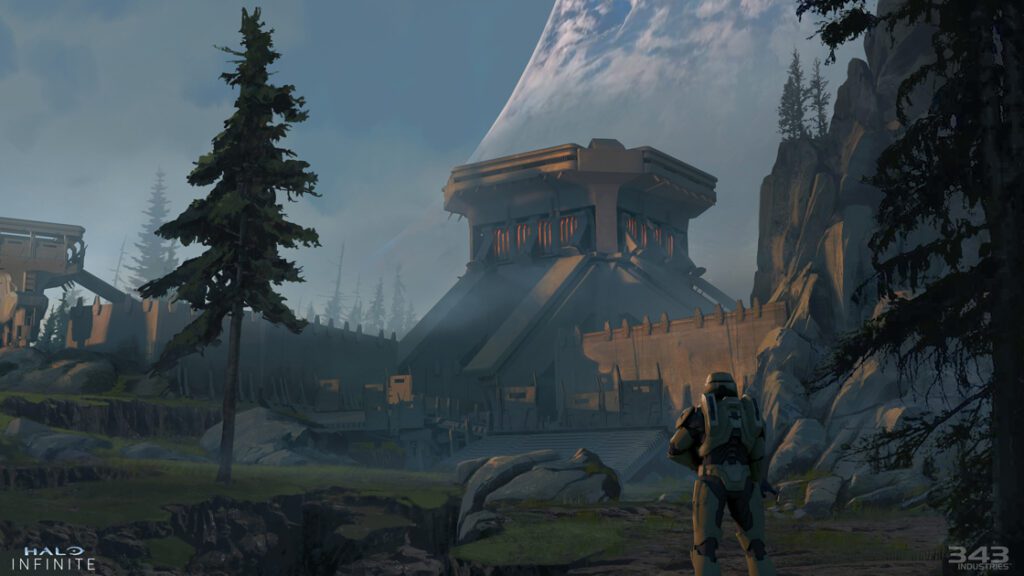Concept art is a vital part of game development, providing a visual representation of what the game’s developers have in mind. Artists use tools such as pencils, markers, software such as Photoshop, and hardware, including high-resolution monitors and graphics tablets to create sketches, 2D paintings, 3D models, and animations. The process of creating concept art involves gathering ideas and inspiration, sketching ideas, refining sketches, creating final designs, getting feedback, and making changes. Concept artists must also consider technical limitations, ever-changing requirements, and tight deadlines. Despite the challenges, the rewards of seeing their artworks come to life in a video game are significant.
From Sketch to Screen: An Inside Look at the Process of Creating Concept Art for Games
Introduction
The world of video games is a magical one that has captivated millions of people around the globe. These digital wonders take us to exciting new worlds, immerse us in gripping stories, and offer us unforgettable experiences. However, before we can play games, someone has to create them. And a critical step in this process is creating concept art.
This article will give you an inside look at the process of creating concept art for games, from the first sketch to the final product. You’ll learn about the different steps involved, the tools used, and the challenges that concept artists face.
The Role of Concept Art in Game Development
Concept art is the initial stage in the game development process. It serves as a visual representation of the ideas and concepts that game developers have in mind. The purpose of concept art is to provide a clear visual reference for everyone involved in the game’s development, from artists and designers to programmers and producers.
Concept art can take many forms, including sketches, 2D paintings, 3D models, and even animations. It’s the foundation upon which the game’s visual style and design are built.
The Concept Art Process
Creating concept art for games is a complex process that involves many different stages. Below, we’ve outlined the key steps involved in this process.
Step 1: Gathering Ideas and Inspiration
The first step in creating concept art is to gather ideas and inspiration. This involves researching the game’s genre, theme, and setting, as well as looking at art styles, color schemes, and character designs that have been successful in other games.
Step 2: Sketching Ideas
After gathering ideas and inspiration, the next step is to start sketching concepts. This is where the artist’s creativity and imagination come into play. They will often do multiple sketches, experimenting with different compositions, lighting, and perspectives.
Step 3: Refining the Sketches
Once the artist has a rough concept in mind, they begin to refine the sketches. This may involve adding more detail, adjusting proportions, or experimenting with different color palettes.
Step 4: Creating a Final Design
After refining the sketches, it’s time to create a final design for the concept art. Depending on the type of art being created, this may involve creating a detailed 2D painting or a 3D model.
Step 5: Feedback and Iteration
Once the final design is complete, it’s time to get feedback from other members of the development team. This often results in several iteration cycles where the concept artist will make changes based on feedback until the final product is complete.
The Tools of the Trade
Concept artists use a variety of tools to create their artwork. Here are some of the most common tools and technologies used in the industry today.
Sketching Tools
Many concept artists still prefer to sketch their ideas on paper using traditional tools like pencils, pens, and markers. However, digital sketching tools like tablets and stylus pens are becoming more popular as they offer greater flexibility and the ability to easily make changes.
Software
Concept artists use a range of software tools to create their art. The most common are Photoshop and other graphic design software, 3D modeling software like Maya or Blender, and sculpting software like Zbrush.
Hardware
The hardware used by concept artists varies depending on their preferences and budgets. Most artists use high-end computers or laptops, high-resolution monitors, and graphics tablets with stylus pens.
The Challenges of Creating Concept Art for Games
While creating concept art for games can be a rewarding process, it’s not without its challenges. Here are some of the most common challenges that concept artists face.
Tight Deadlines
The video game industry moves at a fast pace, and projects often have tight deadlines. This can be stressful for concept artists who may have to work long hours to meet deadlines.
Changing Requirements
Game development is a collaborative process, and sometimes requirements change as the project progresses. This can result in last-minute changes to concept art that can be frustrating for artists.
Technical Limitations
Concept art is the first step in creating a game’s visual style and design, but artists must also consider the technical limitations of the game engine and platform they are working on. This requires a significant amount of skill and knowledge to ensure that the art is both visually stunning and technically feasible.
Conclusion
Concept art is a critical component of the game development process. It serves as the foundation upon which the game’s visual style and design are built. The process of creating concept art is complex and involves many different stages, from gathering ideas and inspiration to creating a final design. While there are challenges involved in creating concept art, the rewards of seeing your artwork come to life in a video game are significant.
